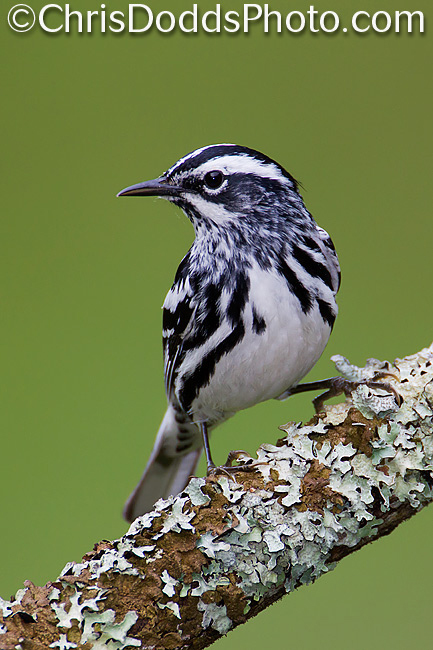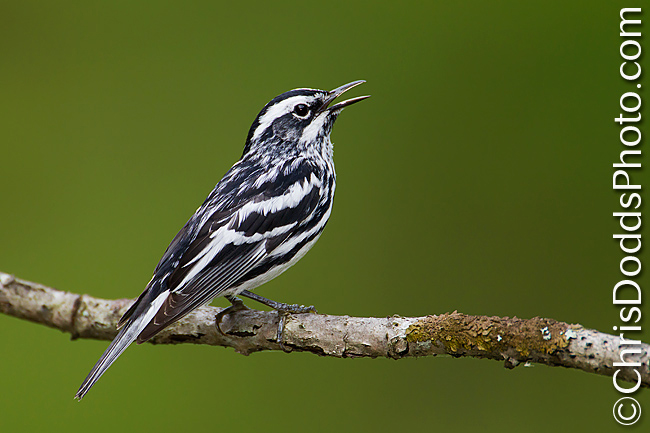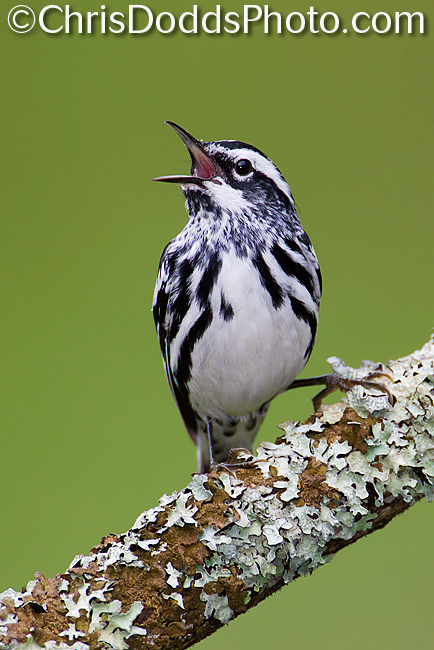


Point Pelee Workshop report ... continued
In keeping with tradition, my annual bird photography workshop at the Southernmost tip of land in Canada, Point Pelee National Park of Canada, kept us all on our feet for hours at a time. We hiked far and wide while carrying our camera gear; Robert Parent (from Quebec) called it "Extreme Bird Photography". I would hate to think just how far we really did walk each day. Everyone in the group remained in good spirits, despite the cold, and sometimes wet, weather. These images of this Black-and-white Warbler were all made within minutes of each other, they are the same bird we found foraging a pile of discarded sticks along Woodland trail early in the workshop. I enjoyed using the relatively noiseless high ISO capabilities of Canon's newset professional camera body, the Canon EOS 1D mark IV. I have always forced myself to never use more than ISO 400 with it's predecessor, so pulling-off consitently sharp images in low light during this trip was much easier than with earlier cameras.
Canon Auto-focus, Instruction book, firmware, and LensAlign
I was sitting on the tram on the way to the tip discussing Canon's latest camera bodies when a well known photographer said that he wasn't happy with the 7D he had purchased for his wife. Quick check of the custom settings showed it still had the old firmware, few of the custom functions had been properly set-up , the camera was even set to sRGB colorspace and there had been no micro-adjustment made. I downloaded the latest firmware that night and installed it the next morning for him; making a few adjustments to his custom settings. "Its much better now" was shouted-out across the parking lot that afternoon.
Perhaps Canon unleashed a beast when they decided to offer such a wide variety of user defined custom functions; few people read the instruction manual and really know how to set them. Before you decide that your camer'a AF isn't working properly, take the time to make sure it is set-up and be sure to micro-calibrate each of your lenses using LensAlign Pro.....please!
Black-and-White Warbler (Mniotilta varia, Paruline noir et blanc, BAWW)
The Black-and-white Warbler, Mniotilta vary, Paruline noir et blanc, BAWW, has an unusually long hind toe and claw on each foot. This adaptation allows it to move securely on the surface of tree bark. They are known for their habit of creeping around tree trunks and along larger branches in search of insect food in crevices or under the bark; hence its old name, "Black-and-white Creeper." Unlike the Brown Creeper, which only moves up a tree, the Black-and-white Warbler can climb in any direction. Unusually aggressive for a warbler, the Black-and-white Warbler sometimes attacks and fights Red-breasted Nuthatch, Black-capped Chickadee, Tennessee Warbler, and other species. It is the only member of the genus Mnitila, which means "moss plucking".
